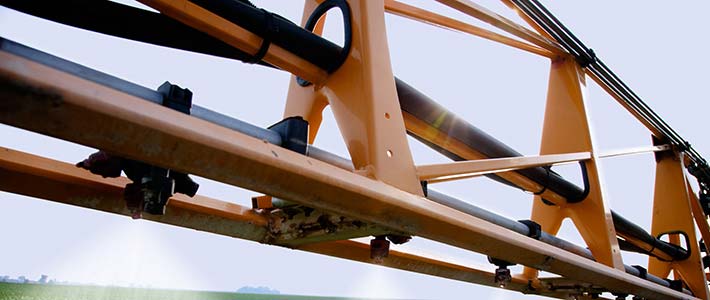Harvest is in full swing, many of you are mid harvest, some of you are digging out combines and a few of you are finished and out repairing your ice fishing rigs. The seed sales people are also out, talking to you, going over varieties and seed treatment options.
My first advice is, take your time and consider your needs.
My second piece of advice follows suit. Ask yourself, do I NEED a seed treatment? If so which ones are appropriate for your situation? Neonicotinoid seed treatments are effective in controlling soil borne insects such as corn rootworms when planting in soils with either high levels of manure applied or are following conservation planting or pasture ground. They are also helpful with soybean aphid control when planting soybeans late, such as double-cropped land following edible peas.
Fungicide treatments have been proven helpful when planting in cool to cold, damp soils, especially those with a past history of seedling disease.
If your crop is not being planted in those situations, seed treatment rarely pays.
The question becomes: How many of my planted soybean acres will fall into those categories?
To evaluate this, let’s use the following.
You are planting 1,000 acres of soybeans. Fungicide treatments are, roughly, $8/acre, neonicotinoid seed treatments are $6/acre, for a total cost of $14 per acre, or $14,000. What is your predicted profit? Will you be selling your beans at $8/bushel, $12/bushel or somewhere in the middle? If bean prices turn south, is that $14,000 your difference between profit and loss? I can guess, but only you know your predicted costs.
The seed companies understand this, so they sweeten the deal. If you use a fungicide seed treatment, you get 50 percent off seed required for replanting. If you use both, you get 100 percent off required seed for replanting.
Consequently, purchasing the seed treatment is like an insurance premium. How much insurance you get depends on the premium paid. So put the pencil to the premium.
How many acres do you typically replant every year? Will you plant 10 percent, or 100 acres? How much seed can you purchase for $14,000? If you paid for the fungicide treatment, then how much seed can you purchase for $6,000? But remember, the seed company will charge you half? How often do you replant back to soybeans?
I suspect most of you replant less than 2 percent of your soybean acres back to soybeans, annually. The end question should be what is the likelihood of a positive return on investment? If it doesn’t pencil out, why should you do it?
It is important to read the fine print on all of these promotions as well. If they only cover the replant costs if the seed was planted in a certain window that may limit the usefulness of the seed treatment and the replant payments. Many of these promises come with catches that they will not tell you at the time. Remember the old adage, “If it seems too good to be true, it probably is.”
Seed treatments have proven useful with many crops. However they only work if the problem they solve exists. If you are planting in adequately warm conditions with acceptable soil moisture levels, fungicide seed treatments will be of little use to you. If on the other hand, you are planting into a hostile environment, such as a cold, damp soil (disease site), or a heavily manured soil (soil borne insect site), selected seed treatments may prove useful.
You know your needs best; don’t let someone else convince you of your needs.
David Kee is Director of Research for Minnesota Soybean. To contact David, call 888.896.9678 or email david@mnsoybean.com.
Tags: fungicide, neonicotinoids






